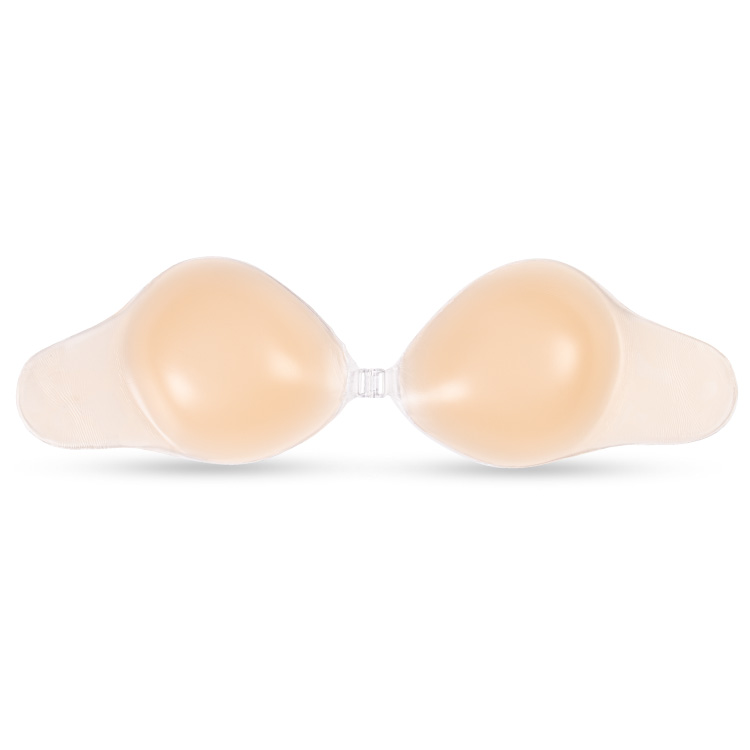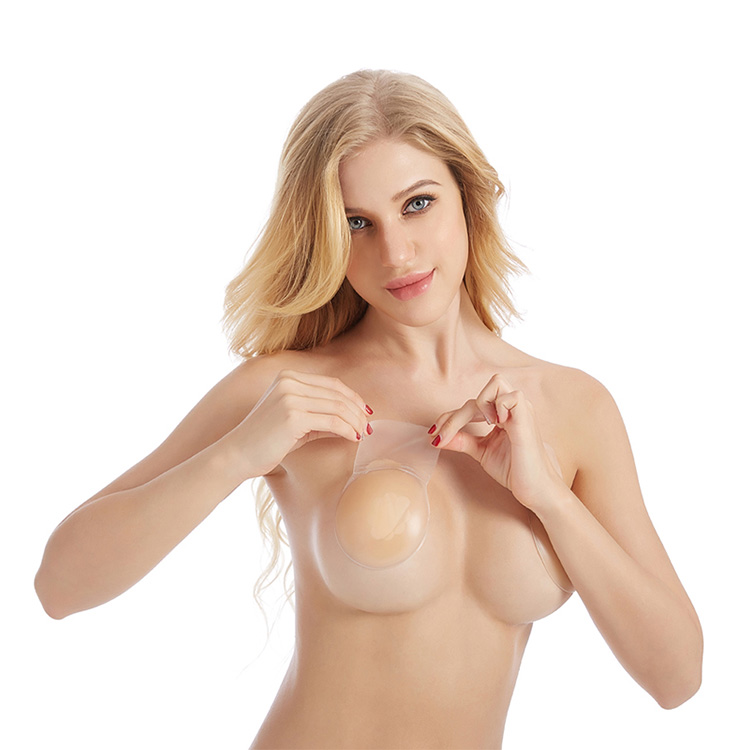Los cubrepezones son indispensables accesorios de moda, ofreciendo libertad para escotes complicados y aumentando la confianza al garantizar una silueta suave. Pero una pregunta crucial para los consumidores y las empresas es: ¿Son seguras las cubiertas de pezón?? Para mayoristas, propietarios de tiendas/marcas, y vendedores de comercio electrónico, Comprender la seguridad del producto es vital para la confianza y el éxito.
Este artículo explora la seguridad de la cubierta para pezones., materiales de cobertura, preocupaciones de salud, distinciones de productos, y cómo las empresas pueden seleccionar y vender calidad, cubre pezones seguros. Fabricantes responsables, priorizar materiales seguros certificados y control de calidad, Sé que esto es clave. Esta guía ayuda a las empresas a navegar con confianza en este tema.
¿Qué entra en las cubiertas de tus pezones??

La seguridad de un cubrepezones desechable o reutilizable depende en gran medida de sus materiales, particularmente la cubierta en sí y el adhesivo. Comprender estos componentes es clave para las empresas.
A. Silicona: El jugador estrella en la cobertura de pezones
La silicona domina en los cubrepezones. Entonces, ¿Son seguras las cubiertas de silicona para pezones?? Generalmente, Sí, con alta calidad, silicona de grado médico. no es toxico, no cancerígeno, hipoalergénico, hidrófugo, no absorbido por el cuerpo, una barrera bacteriana, y permite que la piel respire. Su estabilidad frente a la temperatura., humedad, y la radiación UV también es beneficiosa. “Grado médico” La silicona está diseñada y probada para determinar su biocompatibilidad. (P.EJ., FDA, ISO 10993). El sistema de curado es vital. La silicona de grado médico a menudo utiliza un sistema Platinum Cure System más limpio., sin producir subproductos nocivos, resultando en una reacción no reactiva, producto biocompatible. Las siliconas convencionales pueden utilizar un sistema de curado con peróxido., dejando subproductos ácidos, haciéndolos potencialmente no biocompatibles. Esto hace que el grado médico sea superior.. Las preocupaciones sobre la calidad de la silicona que bloquea los poros son generalmente infundadas debido a su transpirabilidad.
B. La situación pegajosa: Entendiendo los adhesivos
El adhesivo garantiza que las cubiertas para pezones permanezcan en su sitio.. Entonces, ¿Son seguras las pegatinas para pezones?? La seguridad depende del tipo y la calidad del adhesivo.. “Grado médico” Los adhesivos están formulados para el contacto con la piel., Equilibrando la adhesión con una eliminación suave.. Los adhesivos de silicona son suaves, bueno para pieles sensibles o reposicionamiento. Los acrílicos suelen ser los preferidos por su durabilidad.. Las coberturas de primas pueden indicar el uso de productos de grado médico., Adhesivos certificados por SGS. Existen sistemas avanzados como los adhesivos para piel suave DuPont™ Liveo™. “Hipoalergénico” Los adhesivos minimizan las reacciones alérgicas., preferido para pieles sensibles. A pesar de los avances, La irritación puede ocurrir debido a sensibilidades., materiales de baja calidad, o uso inadecuado (desgaste prolongado, piel sucia).
Cubrepezones y salud

Más allá de los materiales, Los consumidores tienen preocupaciones de salud más amplias.. Abordarlos con hechos es crucial para la confianza.
A. La cuestión del cáncer: Separando la realidad de la ficción
Una preocupación seria: ¿Las cubiertas para pezones causan cáncer?? inequívocamente, No hay evidencia científica que vincule las cubiertas para pezones o los sujetadores con un mayor riesgo de cáncer de mama.. La Sociedad Americana del Cáncer (SCA) y Cáncer de mama Ahora desacreditan los mitos de que los artículos que se usan sobre la piel causan cáncer al obstruir el flujo linfático o la acumulación de toxinas.. A 2014 Un estudio no encontró ningún vínculo entre el sostén y el cáncer de mama. Acciones físicas como apretar los senos no causan cáncer. Una lesión importante podría causar un bulto benigno (necrosis grasa), pero no el cáncer. Las preocupaciones sobre que los cubrepezones de moda causen cáncer son infundadas; Los mecanismos teorizados son similares a los refutados para los sujetadores/antitranspirantes.
B. Sensibilidad de la piel, Alergias, e irritación: Mantener la piel feliz
Sensibilidad de la piel, reacciones alérgicas, o irritación son más comunes. Las fundas de alta calidad son suaves, pero las reacciones individuales son posibles, especialmente con piel sensible. Los materiales de baja calidad también pueden contribuir. Para mitigar riesgos:
- Elija materiales hipoalergénicos: Opte por silicona de grado médico y adhesivos hipoalergénicos.. Fundas de tela (P.EJ., algodón) pueden ser alternativas.
- Prueba de parche: Antes del uso prolongado de un producto nuevo., Pruebe en un área pequeña de la piel.
- Preparación adecuada de la piel: La piel debe estar limpia y seca.. Aceites, lociones, o los polvos pueden interferir con la adhesión e irritar. Si se produce irritación, suspender el uso. Consulte a un dermatólogo si es grave/persistente.. Aunque es raro, prolongado, Las láminas ininterrumpidas de gel de silicona para cicatrices provocaron problemas en caliente., condiciones sudorosas, fomentando el crecimiento bacteriano. Aunque las fundas de moda son más pequeñas/se usan más cortas, esto resalta no usar excesivamente productos adhesivos sin dejar que la piel respire, especialmente en calor. El cumplimiento de los tiempos de uso y la higiene es clave.
do. El dilema del uso prolongado: ¿Cuánto tiempo es demasiado largo??
¿Cuánto tiempo se pueden usar las cubiertas para pezones de forma segura?? La mayoría recomienda 6-8 horas. Algunos productos reclaman más tiempo , pero retírelo si surge alguna molestia. Exceder el máximo típico de ocho horas para los sujetadores adhesivos aumenta el riesgo de irritación y reduce la eficacia del adhesivo.. No se recomienda usarlo durante la noche.. “Tiempo sin aplicaciones” es importante; oclusión continua de la piel, especialmente con sudor, puede comprometer la integridad de la piel. Los períodos regulares de limpieza y recuperación de la piel garantizan una experiencia segura..
Cubiertas de pezones vs. Protectores para pezones

A menudo surge confusión entre “cubre pezones” y “protectores de pezones.” Estos son productos distintos para diferentes propósitos., con consideraciones únicas. Para empresas, Articular claramente estas diferencias es vital para informar a los clientes y evitar malentendidos..
A. Cubrepezones de moda (empanadas, Pegatinas): Los potenciadores estéticos
Moda cubre pezones y cinta para los senos son accesorios estéticos para la modestia, prevenir la protrusión del pezón, logrando una silueta suave, y como alternativas de sujetador. Normalmente están hechos de silicona o tela con respaldo adhesivo., su seguridad depende de la calidad del material, naturaleza adhesiva, y uso adecuado.
B. Protectores para pezones de lactancia: Las ayudas para el cierre
Los protectores de pezones para lactancia son ayudas médicas y de alimentación funcionales., generalmente delgado, dispositivos de silicona flexibles colocados sobre el pezón de la madre durante la lactancia. Su función principal es ayudar a los bebés con dificultades para prenderse debido a pezones planos/invertidos., precocidad, o la transición del biberón al pecho, proporcionando una forma más firme.
do. Comprender la palabra clave: “¿Por qué no se recomiendan las pezoneras??”
Aquí es donde “¿Por qué no se recomiendan las pezoneras?” es relevante. Cuando los profesionales de la salud advierten contra las pezoneras, Casi siempre es específico de la lactancia materna y la salud infantil., no debido a peligros inherentes a la propia silicona para este propósito. Los protectores para pezones son soluciones temporales bajo orientación profesional.. Razones protectores de pezones para lactancia podría ser “no recomendado” o utilizados con precaución incluyen :
- Transferencia de leche ineficaz: Un ajuste/enganche incorrecto puede significar una mala extracción de leche, afectando el peso del bebé y el suministro de leche materna.
- Preferencia de pezón: Los bebés pueden acostumbrarse a los escudos, luchando por agarrarse al pecho desnudo.
- Problemas de cierre de enmascaramiento: Shields podría ofrecer una solución temporal sin abordar los problemas subyacentes.
- Mayor riesgo de mastitis: El drenaje ineficaz de la leche aumenta el riesgo de mastitis.
- Desafíos prácticos: Los escudos pueden ser complicados, deslizar, y necesita una limpieza diligente. Estas preocupaciones son Protectores de pezones exclusivos para lactancia, no cubre pezones de moda. La tabla aclara más.
Cubrepezones de moda vs.. Protectores para pezones de lactancia

| Característica | Cubrepezones de moda (P.EJ., Empanadas de silicona) | Protectores para pezones de lactancia |
| Uso primario | Mejora estética, modestia, prevenir que el pezón se vea, alternativa de sujetador | Ayuda a la lactancia materna para ayudar a los bebés a prenderse y alimentarse eficazmente |
| Materiales típicos | Silicona, tela, con respaldo adhesivo de grado cosmético | Delgado, silicona flexible de grado médico; sin adhesivo para la piel de la madre |
| Preocupaciones clave | Calidad de los materiales (silicona, adhesivo), sensibilidad de la piel, tiempo de uso apropiado, higiene | Transferencia efectiva de leche, aumento de peso infantil, suministro de leche materna, preferencia de pezón, problemas de cierre de enmascaramiento |
| “No recomendado” Contexto | Mal uso (P.EJ., en la piel rota), Materiales de mala calidad que provocan irritación., alergias individuales conocidas | Cuando se usa sin abordar los problemas subyacentes de la lactancia materna, Tamaño/ajuste incorrecto que conduce a una mala transferencia de leche., riesgo de dependencia |
Qué buscar y cómo asesorar a los clientes
Para empresas, El conocimiento sobre la seguridad del producto tiene que ver con la reputación y la calidad.. Esta sección se centra en aprovechar la información de seguridad y asesorar a los clientes..
A. El poder de la calidad: Abastecimiento y transparencia de materiales (La ventaja B2B)
Asóciese con fabricantes comprometidos con la seguridad, usando “silicona certificada, Película de TPU de Taiwán, y Alemania Adhesivos Wacker” con un “Garantía de calidad segura”. priorizar:
- Silicona de grado médico & Adhesivos seguros para la piel: Estos indican una mayor seguridad.; Se prefiere la silicona de grado médico curada con platino.
- Certificaciones: Busque el registro/cumplimiento de la FDA , ISO 10993 (biocompatibilidad) , ESTÁNDAR OEKO-TEX® 100 (Pruebas de sustancias nocivas para textiles.) , y certificaciones SGS para materiales.
- Transparencia material: Solicitar y proporcionar información detallada del material.
- Concientización sobre la regulación química: Comprender regulaciones como la Proposición de California 65 (puede requerir advertencias para productos químicos como BPS ). Este compromiso con los componentes de calidad y la transparencia genera confianza.
B. Guiando a sus clientes: Mejores prácticas de uso, Cuidado, y longevidad
Equipar a los usuarios con instrucciones de uso claras, limpieza, y almacenamiento para mejorar la seguridad, vida del producto, y experiencia. Prácticas clave:
- Solicitud : Limpio, piel seca, libre de aceites/lociones. Seque bien si está sudado.. Pelar la película, aplicar firmemente.
- Eliminación : Pelar suavemente. un cálido, Un paño húmedo o un desmaquillante a base de jabón o aceite suave pueden ayudar si es difícil.
- Limpieza de reutilizables : Lavar después de su uso con agua suave., jabón no abrasivo (no jabón para platos ) y agua tibia. Adhesivo para lavar a mano suavemente; no frotar/remojar. Enjuagar. Secar al aire con el lado adhesivo hacia arriba., libre de polvo. Evite toallas sobre adhesivo.
- Almacenamiento : Vuelva a aplicar la película/revestimientos protectores para proteger el adhesivo.. Guárdelo en su embalaje original o en un estuche limpio.
- Reemplazo : Reemplazar si la pegajosidad reduce, se produce una nueva irritación, o el daño es visible. La esperanza de vida varía (25+ utiliza para más 99 veces/6-12 meses ). Proporcionar estas instrucciones demuestra responsabilidad.
Llévalo con confianza, Vender con Garantía
La seguridad de la cubierta del pezón muestra que, elegido cuidadosamente y utilizado correctamente, generalmente son seguros. La clave son los materiales de calidad. (silicona de grado médico, adhesivos hipoalergénicos) y uso sensato. Para empresas, este conocimiento es empoderante. Garantías:
- Alta calidad, La silicona de grado médico es biocompatible y segura.
- La preocupación de que las cubiertas para pezones causen cáncer es un mito, sin el respaldo de la ciencia.
- La irritación de la piel se minimiza gracias a una calidad superior., Materiales hipoalergénicos y prácticas correctas.
Las razones por las que no se recomiendan las pezoneras son específicas de las ayudas para la lactancia, no portadas de moda. Asociarse con fabricantes de renombre que priorizan los materiales certificados y el control de calidad permite a las empresas ofrecer cubiertas para pezones con confianza., generar confianza y garantizar el bienestar del cliente para lograr el éxito a largo plazo. Vender con seguridad.